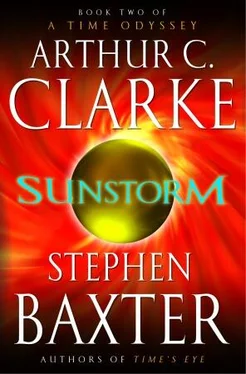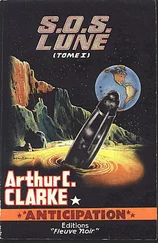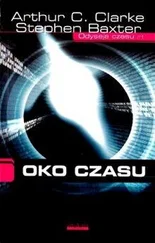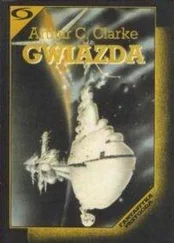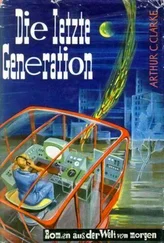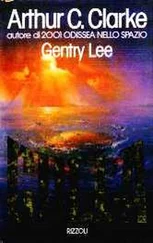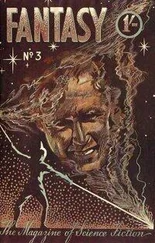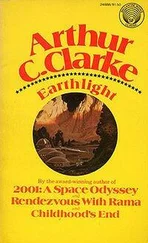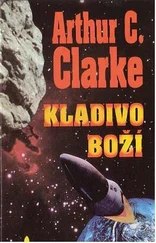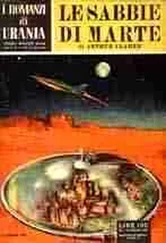“That’s always been the trouble with getting people to work on space weather, even though it’s of such practical importance,” he said. “The sun—Earth environment is a tangle of plasma clouds and electromagnetic fields, and the physics involved is equally messy.” He smiled. “We’re in the same boat, I suppose, me stranded at the Pole of the Moon, you stuck down a Farside hole, both pursuing our unglamorous work.”
Eugene looked at him more closely. Mikhail had the odd feeling that this was the first time the younger man had actually noticed him. Eugene said, “So what got you interested in the sun?”
Mikhail shrugged. “I liked the practical application. The sky reaching down to the Earth … Most cosmological entities are abstract and remote, but not the sun. And besides, we Russians have always been drawn to the sun. Tsiolkovski himself, our great space visionary, drew on sun worship in some of his thinking, so it’s said.”
“Maybe it’s because you don’t get to see much of it so far north.”
Mikhail was taken aback. Was that an actual joke? He forced a laugh. “Come,” he said, standing. “I think it’s time we visited the monitor room.”
***
They had to pass through a short, low tunnel to another dome. And in the monitor room, the younger man stared around, openmouthed.
The room was a twenty-first-century shrine to Sol. Its walls were coated by glowing softscreens that showed images of the sun’s surface or its atmosphere, or the space between Earth and sun, crowded with dynamic structures of plasma and electromagnetism, or Earth itself and its complicated magnetosphere. The images were displayed in multiple wavelengths—visible light, hydrogen light, calcium light, infrared and ultraviolet, at radio wavelengths—each of them revealing something unique about the sun and its environment. Even more instructive to eyes trained to see were the spectral analyses, spiky graphs that laid bare the secrets of Earth’s star.
This was a graphic summary of the work of the Space Weather Service. This lunar post was just one of a network of stations that monitored the sun continually; there were sister stations on all the continents of Earth, while satellites swarmed on looping orbits around the sun. Thus the Service kept myriad eyes trained on the sun.
It was necessary work. The sun has been shining for five billion years, breathing out heat and light and the solar wind, a stream of high-energy charged particles. But it is not unchanging. Even in normal times the solar wind is gusty; great streamers of it pour out of coronal holes, breaks in the sun’s outer atmosphere. Meanwhile sunspots, cooler areas dominated by tangles of magnetic fields, were noticed by humans on the sun’s surface as early as the fourth century before Christ. From such troubled areas, flares and immense explosions can spew high-frequency radiation and fast-moving charged particles out into space. All this “weather” batters against the layers of air and electromagnetism that shield the Earth.
Through most of human history this went unnoticed, save for the marvelous aurorae irregularly painted over the sky. But if humans aren’t generally vulnerable to the storms in space, the electrical equipment they develop is. By 2037 it was nearly two centuries since solar-induced currents in telegraph lines had started to cause headaches for their operators. Since then, the more dependent the human world became on its technology, the more vulnerable it became to the sun’s tantrums—as Earth was learning that very day.
For a fragile, highly interconnected high-technology civilization, living with a star, it had been learned, was like living with a bear. It might not do you any harm. But the least you had to do was watch it, very carefully. And that was why the Space Weather Service had been set up.
Though now led by the Eurasian Union, the Space Weather Service had developed from humbler beginnings in the twentieth century, starting with the Americans’ Space Environment Center, a joint enterprise of such agencies as NASA, the National Oceanic and Atmospheric Administration, and the Department of Defense.
“Back then the data gathered were patchy,” Mikhail said. “Scavenged from science satellites dedicated to other purposes. And forecasting was just guesswork. But a few solar-storm disasters around the solar max of 2011 put paid to that. These days we have a pretty comprehensive data set, continually updated in real time. The forecasting systems are big numerical-prediction suites based on magneto-hydrodynamics, plasma physics, and the like. We have a complete chain of theoretical modeling from the surface of the sun to the surface of the Earth—”
But Eugene wasn’t listening. He tapped a hydrogen-light image. “ That is the problem,” he said.
It was the new active region. Visibly darker than the surrounding photosphere, it was an ugly S-shaped scar. “I admit it’s a puzzle,” Mikhail said. “At this stage of the solar cycle you wouldn’t expect something like that.”
“ I expected it,” Eugene said. “And that’s the whole point.”
Carefully Mikhail said, “The end of the world?”
“Not today. Today is just a precursor. But it will be bad enough. That’s why I’ve come here. You have to warn them.” His eyes were huge and dark, haunted. “I have time-stamped predictions.”
“You told me that.”
“Even so they won’t pay any attention to me. But they will listen to you. After all, this is your job. And now that you’ve got proof, you’ll have to do it, won’t you? You’ll have to warn them.”
Eugene really had no social skills at all, Mikhail thought, with a mix of resentment and pity. “Who are they ? Who exactly do you want me to warn?”
Eugene spread his hands. “For a start, everybody vulnerable. On the Moon. On the Space Station. On Mars, and aboard Aurora 2.”
“And on Earth?”
“Oh, yes. And Earth.” Eugene glanced at his watch. “But by now Earth is already being hit.”
Mikhail studied his face for a long moment. Then he called for Thales.
Siobhan worked the screens in the conference table, seeking information.
It wasn’t easy. Solar studies and space weather simply weren’t in Siobhan’s domain of specialty. Aristotle was able to help, though he seemed somewhat absentminded at times; she realized uneasily that the erosion of the world’s interconnectivity, on which he was based, had to be affecting him, too.
She quickly discovered that there were solar observatories all over the world, and off it. She tried to get through to Kitt Peak, Mauna Kea in Hawaii, and the Big Bear observatory in southern California. She didn’t reach a human being in any of these sites, predictably enough; even if the comms systems weren’t down, they were no doubt already overwhelmed with calls. But she did learn of the existence of a “Space Weather Service,” a network of observatories, satellites, data banks, and experts that monitored the sun and its stormy environs, and tried to predict the worst of its transgressions. There was even a weather station at the South Pole of the Moon, it seemed.
Despite decades of watching the moody sun, though, only one person had predicted today’s unusual events, a young scientist on the Moon called Eugene Mangles, who had logged quite precise forecasts on a few peer-review sites. But the Moon was out of touch.
************
______
Thirty minutes after last speaking with her, Siobhan called Phillippa Duflot again.
“It’s all to do with the sun,” she began.
Phillippa said, “We know that much—”
“It has given off what the sungazers call a ‘coronal mass ejection.’ ”
Читать дальше
